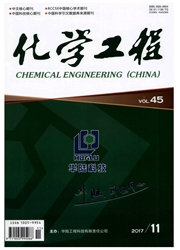

 中文摘要:
中文摘要:
文中根据电炉法生产黄磷原理和钾长石的矿物结构,提出用钾长石替换硅石作为造渣助熔剂的观点,并通过热力学分析,结合炉渣特征温度测定和流动性模拟实验,以探明钾长石替代硅石用于电炉法黄磷生产助熔的效果。热力学计算表明,钾长石较硅石助熔时起始反应温度可降低244℃;用CaO替换磷矿分解产物,按生产酸度条件测定不同助熔剂下体系的特征温度,钾长石体系灰熔融物的流动温度比硅石降低96.2-114.3℃;酸度值均为0.9,1200℃下相同质量混合物熔融后,钾长石-CaO体系的摊开面积是硅石-CaO体系的1.54倍,说明钾长石-CaO体系形成的炉渣黏度更低、流动性更好。综上所述,钾长石比传统的硅石助熔效果更好,排渣更容易,对电炉法黄磷生产的节能降耗具有十分重要的意义和实际应用价值。
 英文摘要:
英文摘要:
According to the principle of producing yellow phosphorus in electric furnace and the mineral structure of K-feldspar, idea of replacing silica using potassium feldspar as flux was presented and the effect of K-feldspar replacing silica in producing yellow phosphorus in electric furnace was studied as fluxing agent though thermodynamic analysis, characteristic temperature of slag and liquidity simulation experiment. Thermodynamic calculation indicated that initial reaction temperature of K-feldspar fluxing could reduce 244 ℃ compared with silica fluxing; the flow temperature of ash melting point reduced 96.2-114.3 ℃ when characteristic temperature was measured according to the same production acidity after using CaO to replace decomposition product from phosphate ore ; the spread out areas of potassium feldspar-CaO system was 1.54 times of silica-CaO system with same quality of mixture melting at 1 200 ℃ when both of acidity value were 0.9, which illustrated that slag liquidity of potassium feldspar-CaO system was better than silica system and viscosity was lower than the latter. In a word, the fluxing action of K-feldspar was better and its slagging was easier, so it was important significance and had practical value for energy-saving and cost-reducing in producing yellow phosphorus in electric furnace.
 同期刊论文项目
同期刊论文项目
 同项目期刊论文
同项目期刊论文
 期刊信息
期刊信息
